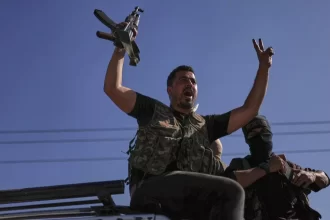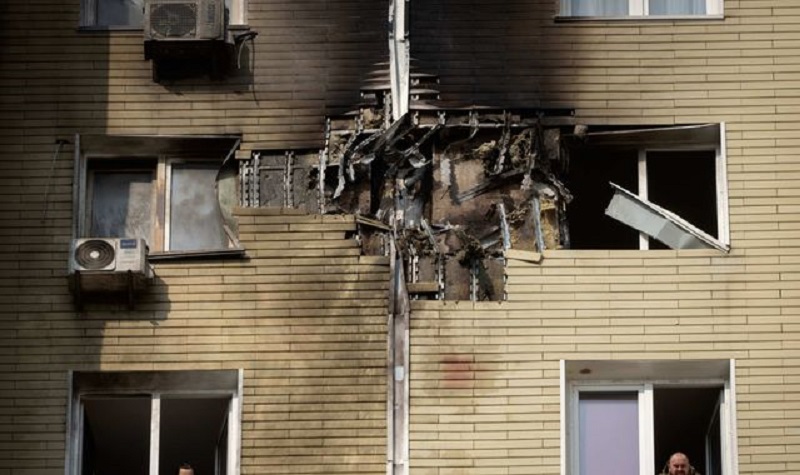June 16 — In the early hours of Monday morning, Israelis were jolted awake by the shriek of air raid sirens and the thunder of explosions overhead. Iran launched a fresh barrage of missiles into Israeli territory, targeting multiple cities and igniting fires, fear, and chaos. At least 67 people were injured in the latest round of violence.
In Tel Aviv, the sky lit up before dawn with powerful flashes—most believed to be interceptions by Israel’s defense systems. Still, some missiles made it through. In Petah Tikva, a quiet residential city just east of Tel Aviv, one missile slammed into an apartment building, blowing out windows, torching walls, and reducing homes to rubble. Emergency responders rushed to the scene, digging through debris in search of survivors.
“We were sleeping. Then everything shook. The windows exploded. My daughter was screaming,” said Miriam Levi, a resident of the damaged building, clutching her young child as paramedics tended to the wounded nearby.
Israel’s emergency medical service, Magen David Adom, reported casualties across at least four different impact zones. Most of the injured are said to be in stable condition, but the psychological toll is growing heavier by the hour.
The Iranian government claimed responsibility for the attack, with state media announcing that more than 100 missiles were launched in retaliation for Israel’s earlier strikes on Tehran—specifically targeting what Israel alleged were key elements of Iran’s nuclear and military command structures.
The escalation is part of a dangerously intensifying conflict between two regional powers. Over the weekend, Iran accused Israel of bombing oil refineries, killing senior Revolutionary Guard officials, and launching deadly airstrikes on populated areas. According to Iranian health officials, at least 224 people have died and over 1,200 more have been wounded since Friday.
Meanwhile, Israel says Iran has launched over 270 missiles in just a few days. Despite its advanced defense systems, 22 missiles broke through, causing widespread damage and grief—killing 14 people and injuring nearly 400 more.
The situation remains volatile, with each day bringing new destruction and sorrow. As international leaders call for calm, families across the region brace for whatever comes next—hoping for peace, but preparing for more terror.








